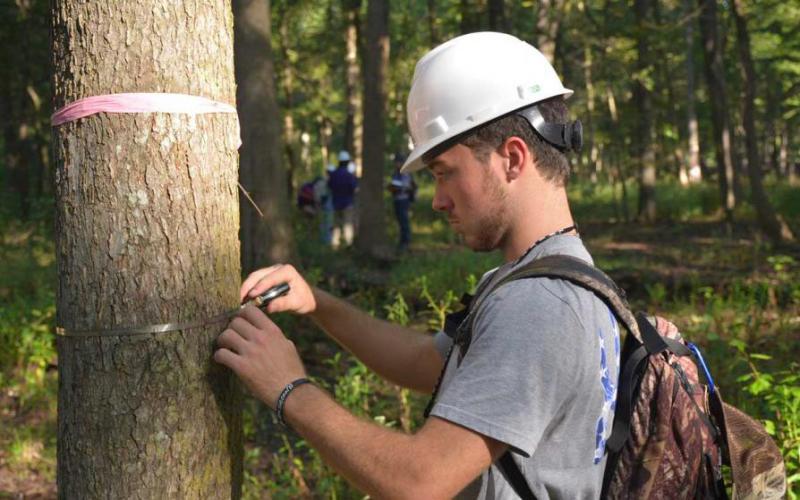The science and business of managing a forest
This career-focused forestry concentration artfully blends several disciplines to provide a deep understanding of the scientific, economic and social aspects of forestry, including:
- how plants and animals interact within their environment
- developing a long-range view of forest planning and management
- adapting to constantly changing environmental and economic conditions
- and evaluating and assessing the social interactions of people with the forest.
You’ll graduate from the program with a Bachelor of Science in forestry and the skills, knowledge and real-world experience that will prepare you for a career in forest management.
Rewarding career opportunities
The forest management concentration teaches students to view the forest as a dynamic entity that intimately links people, plants and animals in a common community. Students who choose this concentration typically find rewarding careers as a forest manager, forest conservationist or forest planner.
Let the outdoors be your classroom
At SFA, we believe that students must do more than just listen to lectures. As a forestry major, you’ll have plenty of opportunities to get out of the classroom and gain real-world, hands-on experience through research and unique, transformative experiences.
Our students have access to world-class laboratories and research sites, including:
- Stephen F. Austin Experimental Forest
- East Texas Plant Materials Center
- SFA Foundation Forests
Bachelor of Science in forestry, concentration in forest management
This concentration emphasizes management, protection, and maintenance of forests for a variety of ecosystem services including wood and fiber products, wildlife habitat, recreational opportunities and water resources. You’ll graduate with a clear understanding of how to meet goals defined by landowners and society while maintaining the ecological integrity of forests.
Check out the forestry curriculum concentration options guide.
*See the Undergraduate Course Bulletin for additional details, guidelines and requirements.
 Axe ’Em, Jacks!
Axe ’Em, Jacks!
